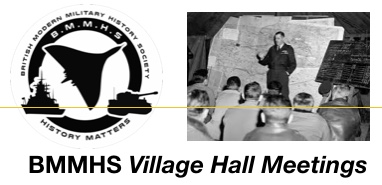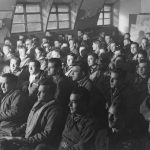BMMHS Evening Meeting: Crimean War
From Wellington’s Army towards Kitchener’s Army: The Crimean War and its Consequences
Speaker: John Cotterill
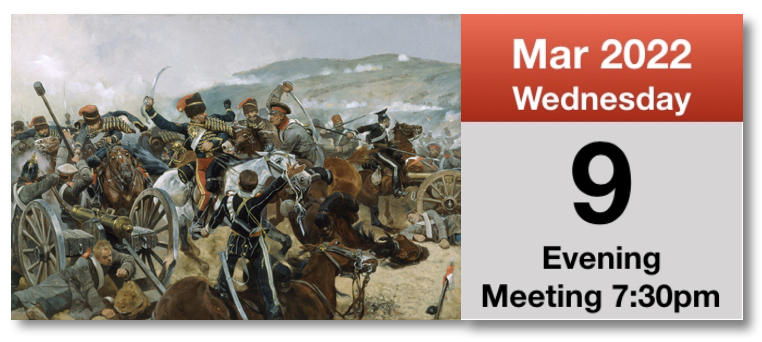
Wednesday 9th March 2022
This Meeting is scheduled to start at 7:30pm
BMMHS Meeting Venue
Woodcote Village Hall, Reading Road, Woodcote, RG8 0QY
In view of COVID the meetings may switch to a Zoom talk at short notice. Please check the bmmhs.org home page for the latest information.
From Wellington’s Army towards Kitchener’s Army: The Crimean War and its Consequences
Talk Summary
John will be talking about the Crimean War of 1854-56 and its effects on the British Army. He will also cover some of the little known effects on Italy, Russia and the USA. It was Britain’s first war in the era of rifled small arms, rifled artillery, telegraphs, war correspondents and railways. All of these caused a huge re-evaluation of the way in which we organised our armed forces and fought our wars. The dead hand of the Iron Duke lay heavy on the British military establishment from 1815 until his death in 1852. This had helped ensure that Britain’s tactics, command system and logistics had not kept pace with purely technological change. Two years later the Crimean War was to be a massive and timely “wake up call” to the British Army.
The Crimean War - Summary
The Crimean War was fought from 1853 to 1856 in which the Russian Empire lost to an alliance made up of the Ottoman Empire, France, Britain and Sardinia.
The causes involved the decline of the Ottoman Empire and the unwillingness of Britain and France to allow Russia to gain territory and power at the Ottoman Empire’s expense.
The war started in the Balkans in July 1853, when Russian troops occupied the Danubian Principalities, which were under Ottoman control and then began to cross the Danube. The Ottomans fought a strong defensive campaign and stopped the advance at Silistra.
Fearing an Ottoman collapse, France and Britain rushed forces to Gallipoli. They then moved north to Varna in June 1854, arriving just in time for the Russians to abandon Silistra.
The allies attacked Russia’s main naval base in the Black Sea at Sevastopol on the Crimean peninsula. After extended preparations, the forces landed on the peninsula in September 1854 and marched their way to a point south of Sevastopol after the successful Battle of the Alma.
The Russians counterattacked on 25 October in what became the Battle of Balaclava and were repulsed, but at the cost of seriously depleting the British Army forces. A second counterattack, at Inkerman, ended in stalemate. The front settled into a siege and led to brutal conditions for troops on both sides. Smaller military actions took place in the Baltic, the Caucasus, the White Sea, and the North Pacific.
Sevastopol fell after eleven months, and neutral countries began to join the Allied cause. Isolated and facing a bleak prospect of invasion from the west if the war continued, Russia, having lost 500,000 troops, sued for peace in March 1856.
The Crimean War was one of the first conflicts in which the military used modern technologies such as explosive naval shells, railways, and telegraphs.The war was one of the first to be documented extensively in written reports and photographs. As the legend of the “Charge of the Light Brigade” demonstrates, the war quickly became an iconic symbol of logistical, medical and tactical failures and mismanagement. The reaction in Britain was a demand for professionalisation, most famously achieved by Florence Nightingale, who gained worldwide attention for pioneering modern nursing while treating the wounded.
Source Wiki

Dr Duigan attending the wounded at the hospital in Sebastopol, 1855 (c)
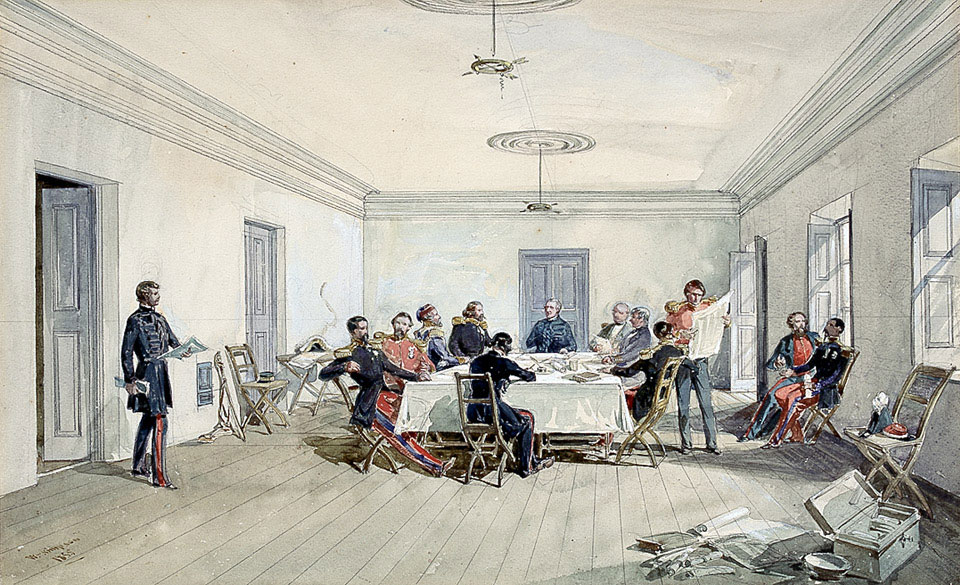
Images from The Crimean War
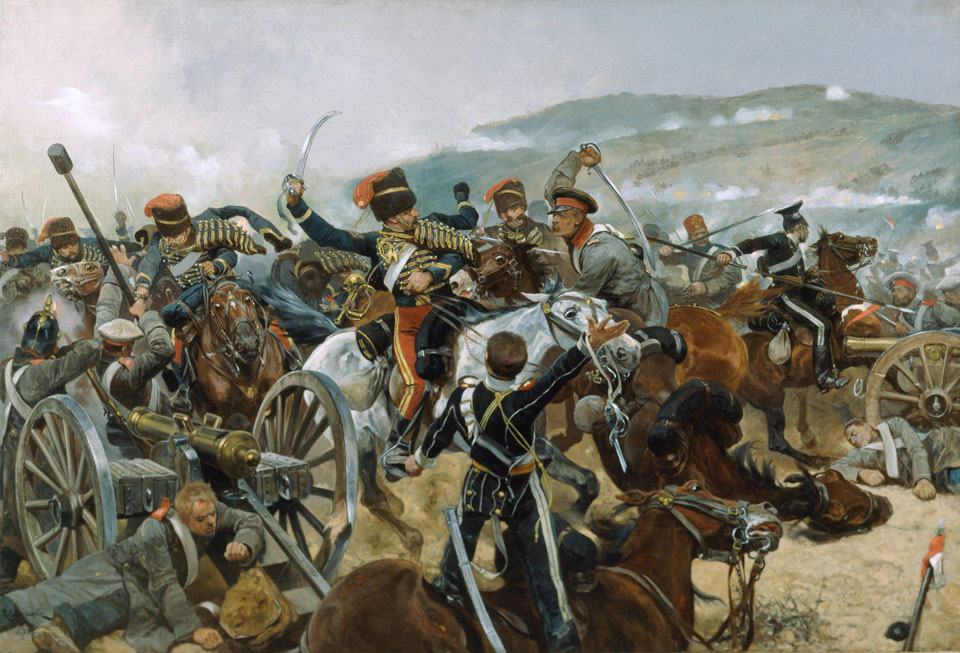
The Relief of the Light Brigade, 25 October 1854
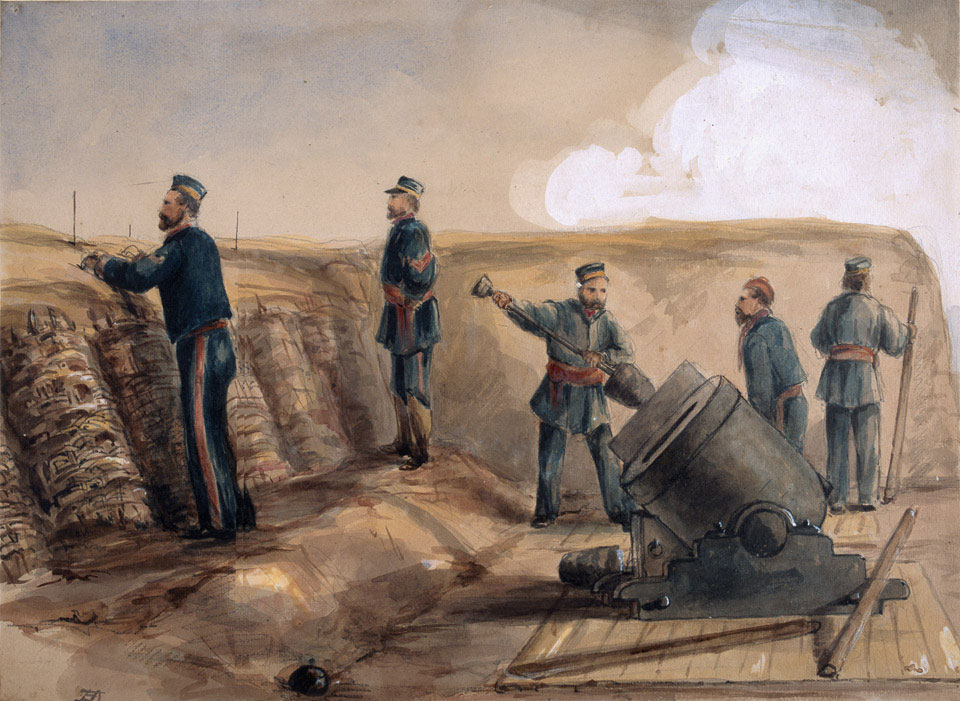
A 13-inch mortar of the Royal Artillery in action, 1855

Biographical notes – John Cotterill
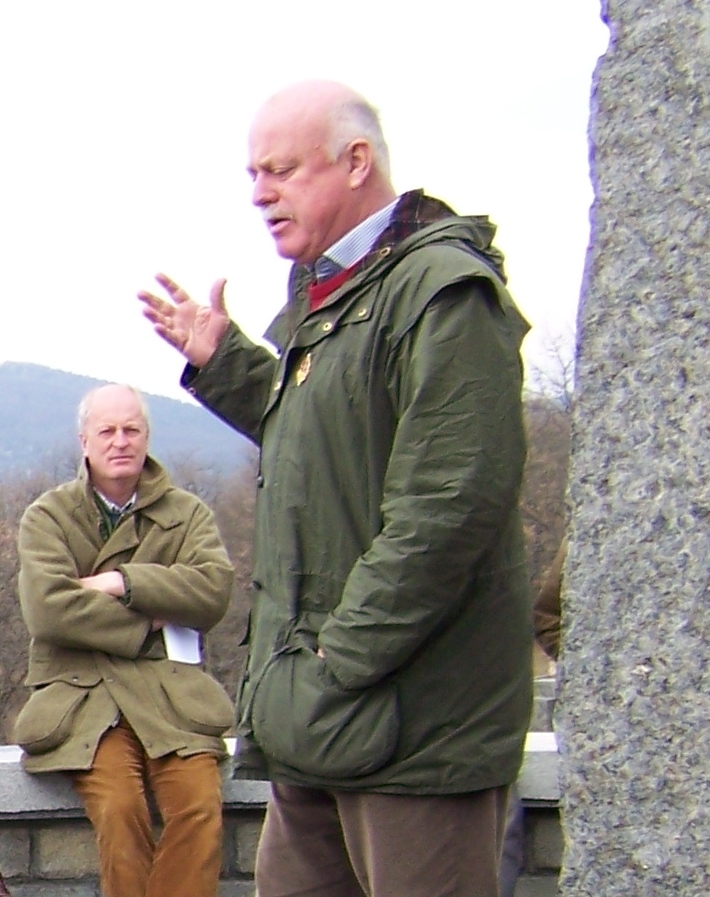
John Cotterill is a self-employed battlefield guide for military groups, veterans, civilian clubs, families, individuals and schools. He was a founder member of the Guild of Battlefield Guides in 2003, was badged in 2004 (Badge 10) and was a Guild validator for 15 years.
John served as a regular officer in the Worcestershire and Sherwood Foresters Regiment and their successors the Mercian Regiment for 37 years. He saw active service in Ulster, the Balkans, Iraq and Afghanistan and inactive service on four continents.
He lives in Nottingham and is an active member of the Western Front Association, the Soldiers, Sailors and Airman’s Families Association (SSAFA) and his Regimental Association.
John’s particular speciality is writing and delivering problem solving exercises that allow participants to “re-fight” battles of the past.
He has guided groups on battlefields from Tanzania to Tunisia and from Stalingrad to Singapore. He led twelve battlefield tours to the Crimea between it’s opening to foreign visitors in 1996 and Putin’s annexation in 2014.
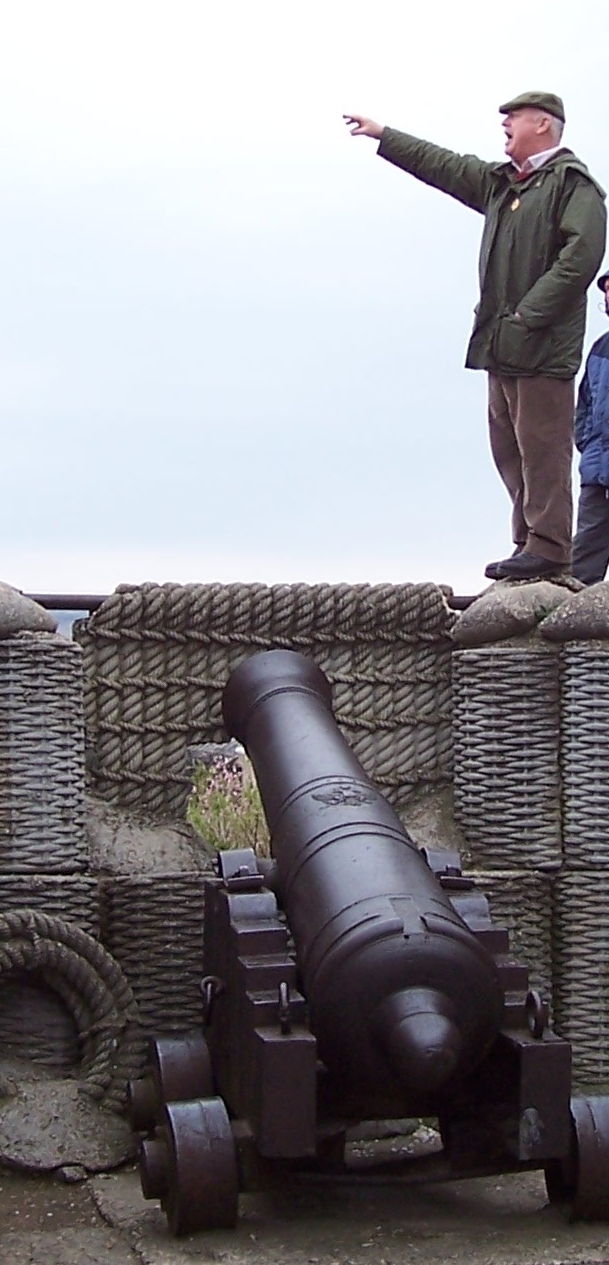
Click to see full BMMHS event listing pages.
Contact us at info@bmmhs.org
Copyright © 2024 bmmhs.org – All Rights Reserved
Images © IWM & NAM
John will be talking about the Crimean War of 1854-56 and its effects on the British Army. I will also cover some of the little known effects on Italy , Russia and the USA. It was Britain’s first war in the era of rifled small arms , rifled artillery , telegraphs , war correspondents and railways. All of these caused a huge re-evaluation of the way in which we organised our armed forces and fought our wars. The dead hand of the Iron Duke lay heavy on the British military establishment from 1815 until his death in 1852. This had helped ensure that Britain’s tactics , command system and logistics had not kept pace with purely technological change. Two years later the Crimean War was to be a massive and timely “wake up call” to the British Army.
Lorem ipsum dolor sit amet, consectetur adipiscing elit. Ut elit tellus, luctus nec ullamcorper mattis, pulvinar dapibus leo.

